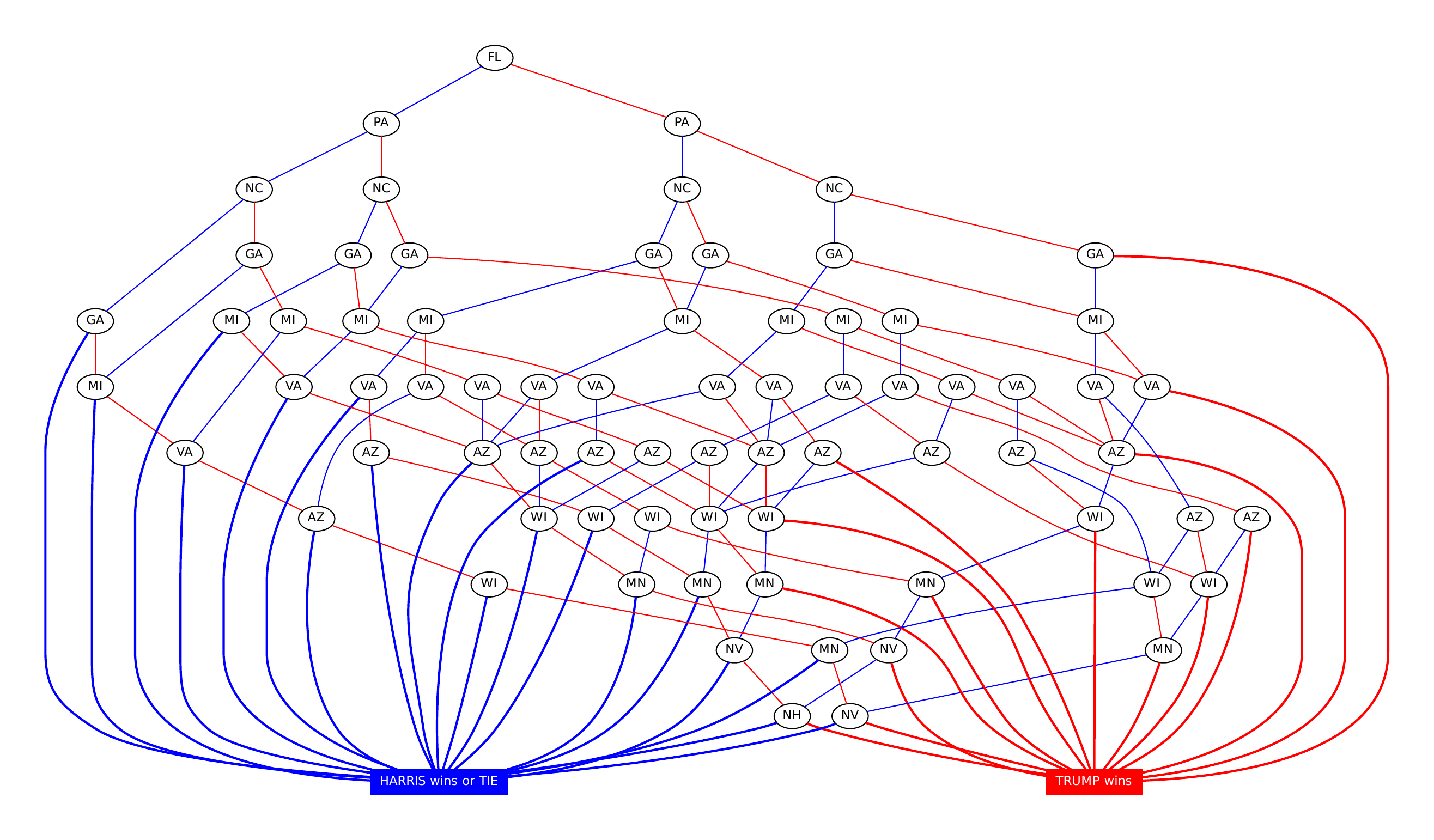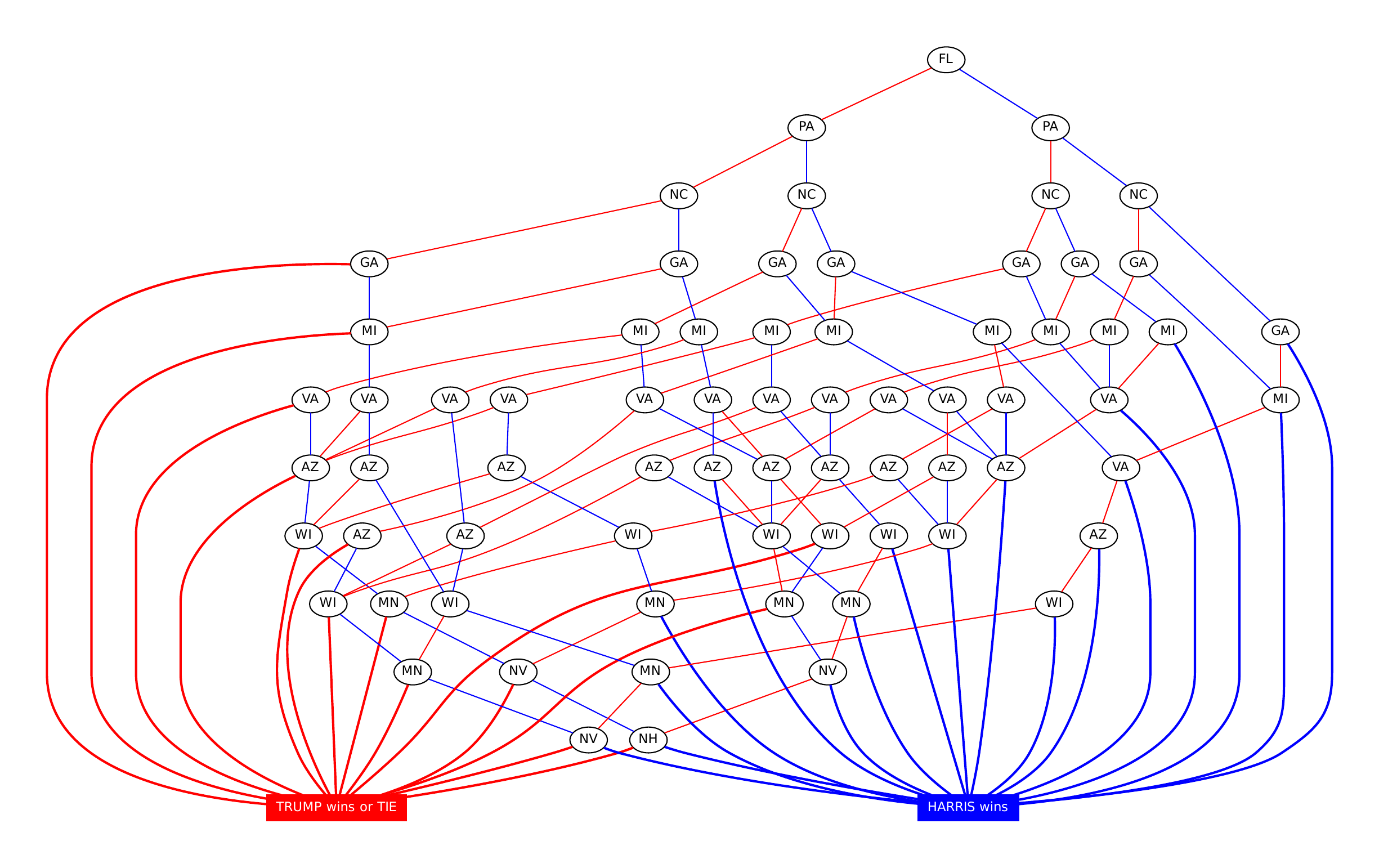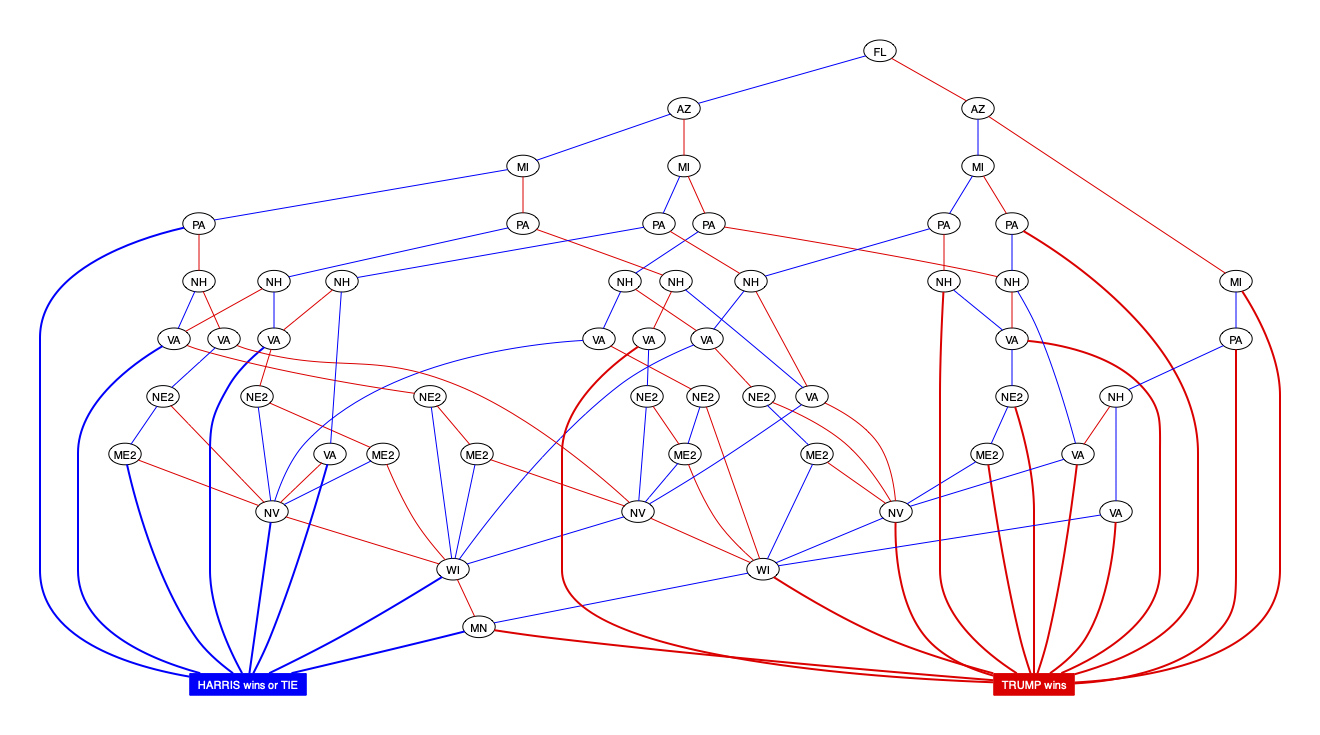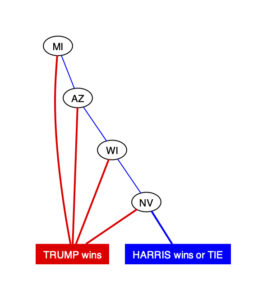The 2024 US Presidential Election Race as an OBDD
Stefan Szeider, Algorithms and Complexity Group, TU Wien.
- Jump to Pre-election Analysis
- Jump to Update 1
- Jump to Update 2
This is an updated version of the analysis of the 2020 US presidential election.
Whether one of the candidates reaches at least 270 electoral votes is determined by the states (or districts) they win. For instance, who wins Pennsylvania (PA) receives its 19 electoral votes.
We can represent the candidates' race to reach 270 electoral votes by an Ordered Binary Decision Diagram (OBDD), a prominent data structure used in Computer Science for various purposes. Don Knuth called OBDDs in a 2009 lecture to be "one of the really fundamental data structures that came out in the last 25 years."
We start with OBDDs that are created before the election took place. Here we have many unknown variables, so the OBDD is large. After the election, when votes are counted and state after state becomes decided, the OBDD becomes smaller and smaller.
Pre-Election Analysis
Below we see an OBDD that represents the data from before the election. We parameterize by the number k of states that we consider open (or a "toss up"). For this, we use the list provided by fivethirtyeight.com, where the states (or electoral districts) are ranked by their likelihood of being on the margin of change, starting with NV, PA, WI, MI, NC, GA, AZ, NH, MN, FL, VA, NE-2, ME-2, NM, TX, IA, ...
The OBDD is read from top to bottom, starting at the top node labeled (PA), representing Pennsylvania. If Trump wins Pennsylvania, we leave (PA) via the red line; if Harris wins Pennsylvania, we leave (PA) via the blue line. We continue this way until we have reached one of the boxes at the bottom: Here we consider k=11.
For instance, a short red path to victory for Trump is (PA)—(NC)—(GA)—[TRUMP wins]

We need to break ties (269:269 votes) in one or the other way. Above, we break ties in favor of Harris, below is a corresponding OBDD where we break ties in favour of Trump.

Update 1 on November 6, 2 am ET
According to various mainstream media, Georgia and North Carolina have been called for Trump. This gives the following updated OBDD.

Update 2 on November 6, 3:20 am ET
Many states have been called, including Florida and Pennsylvania, which brings Trump to 267 projected electoral votes. It is almost certain that he will also get the remaining 3. The following OBDD is hence just academic, and will be the last update.

The author thanks Vaidyanathan P.R. for his help with the OBDD computation. The use of all media posted here is permitted as long as credit is given to the author.

